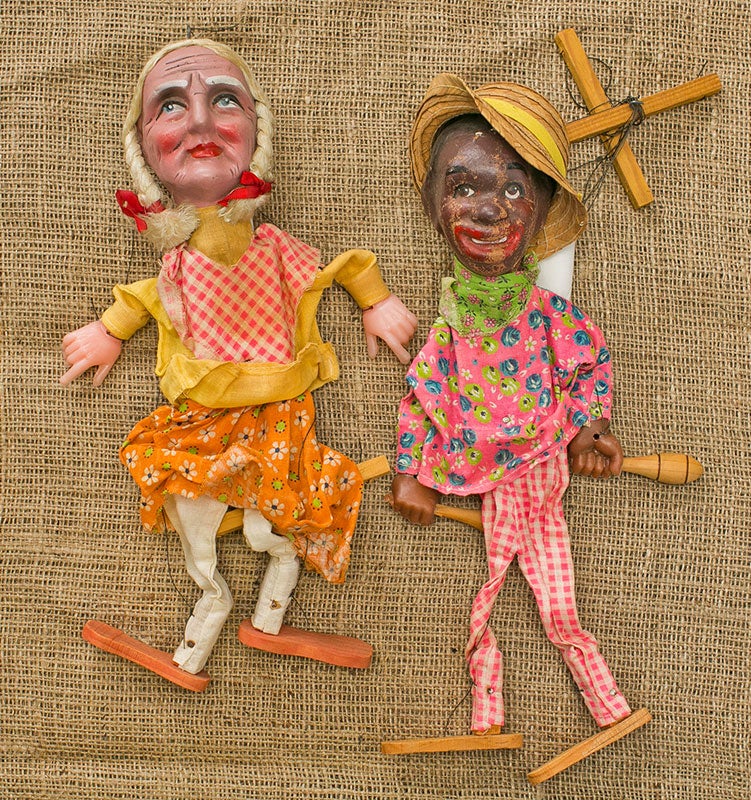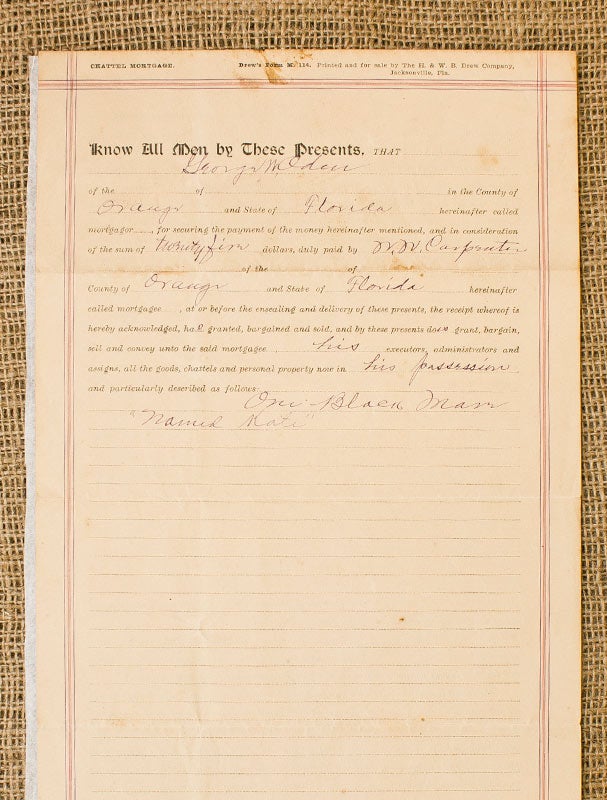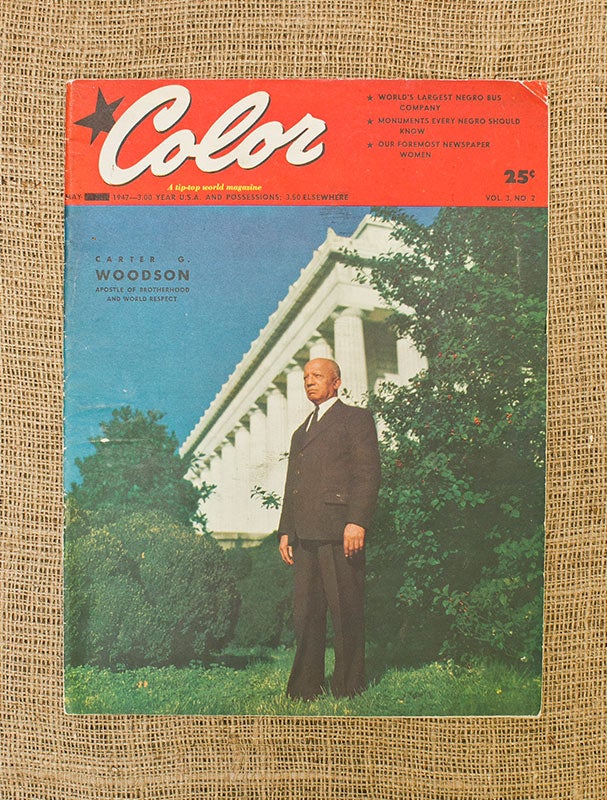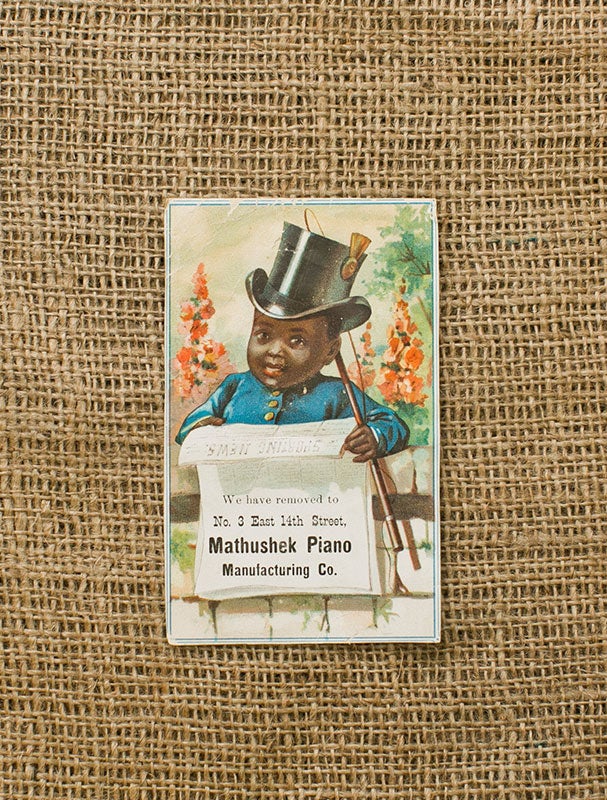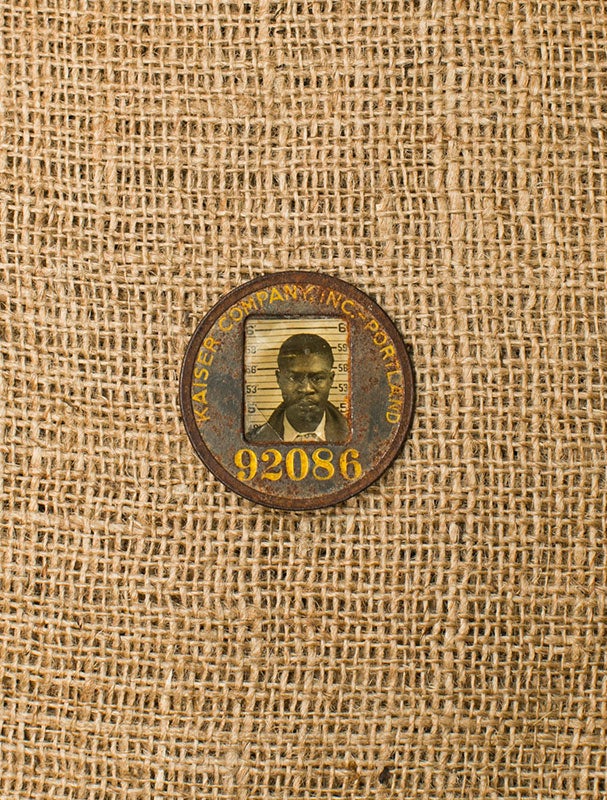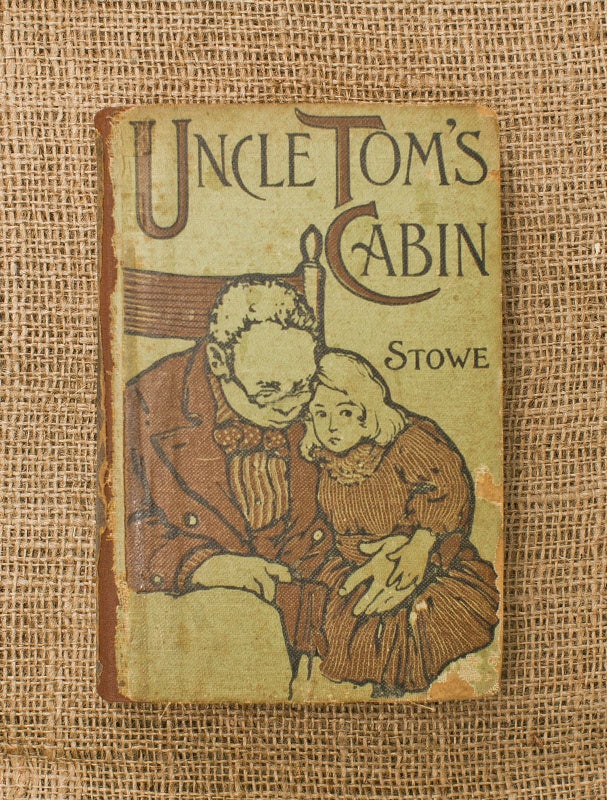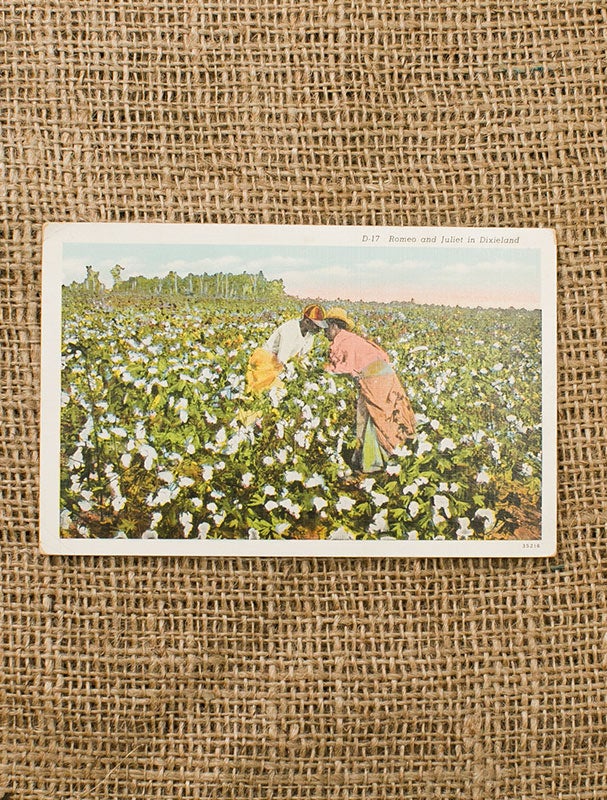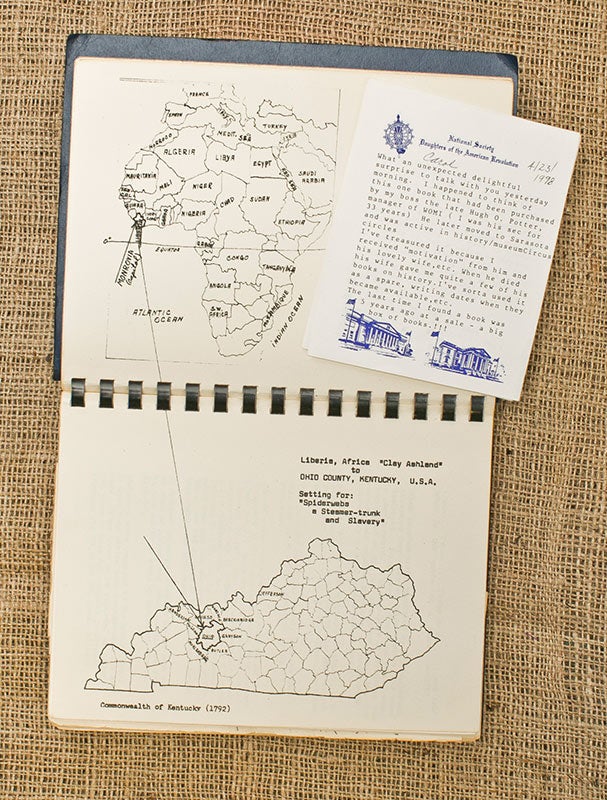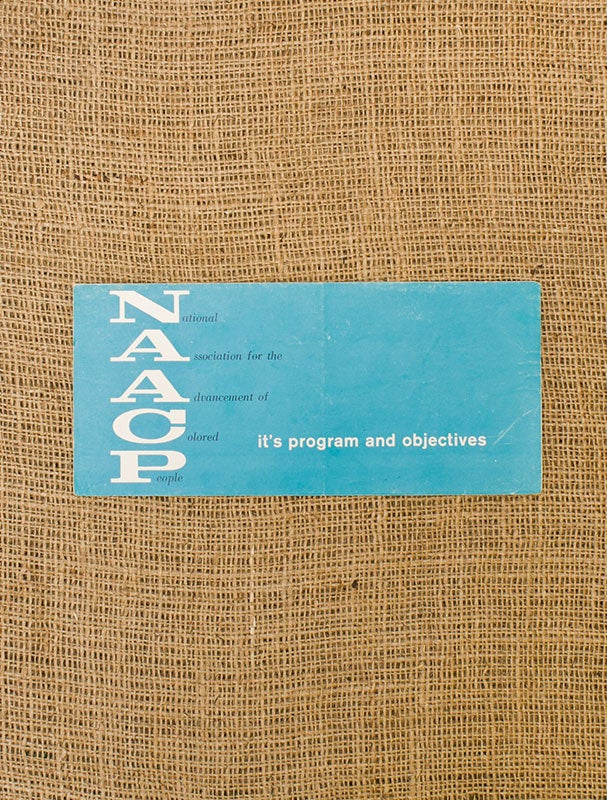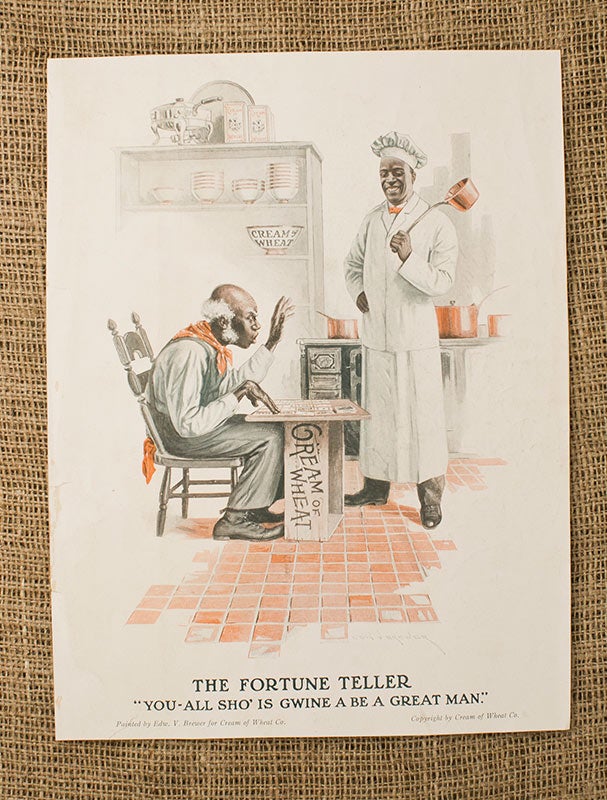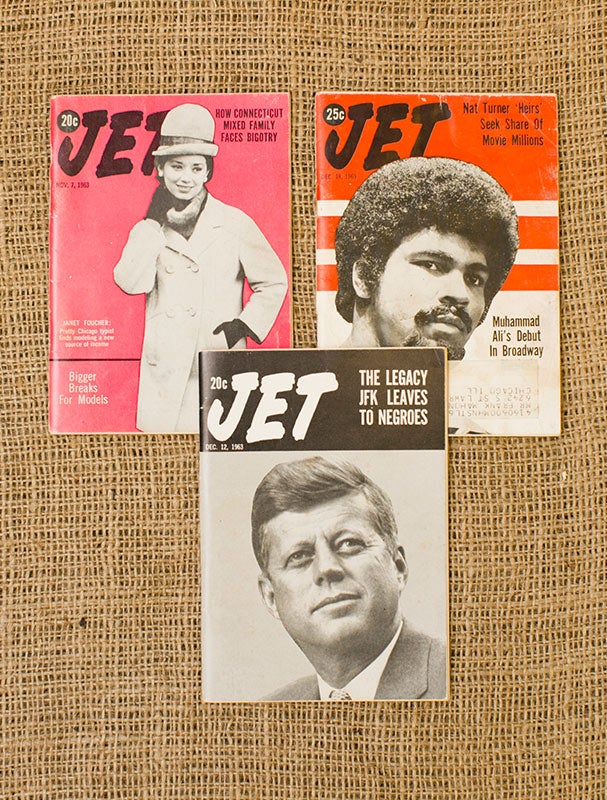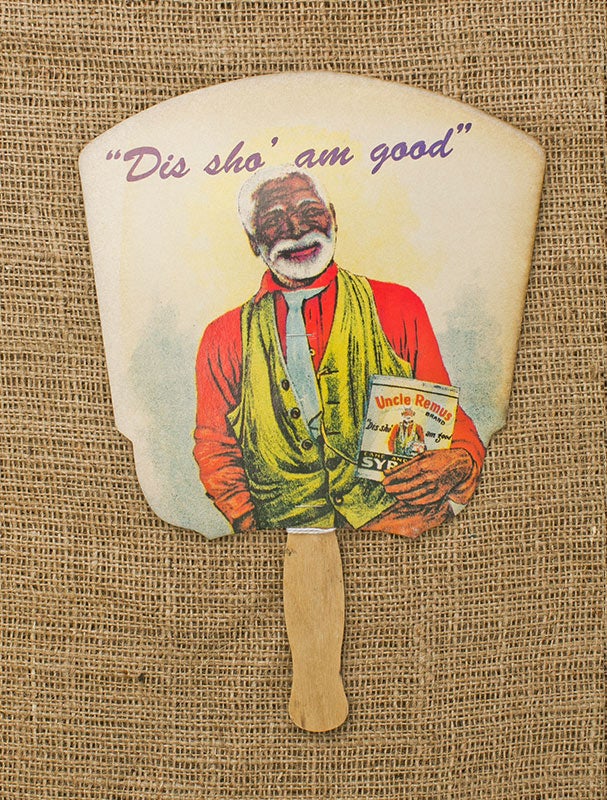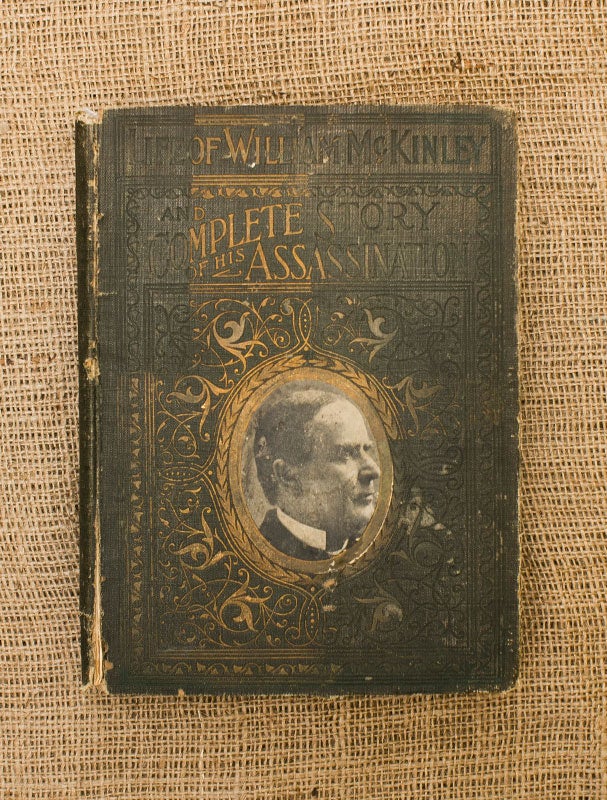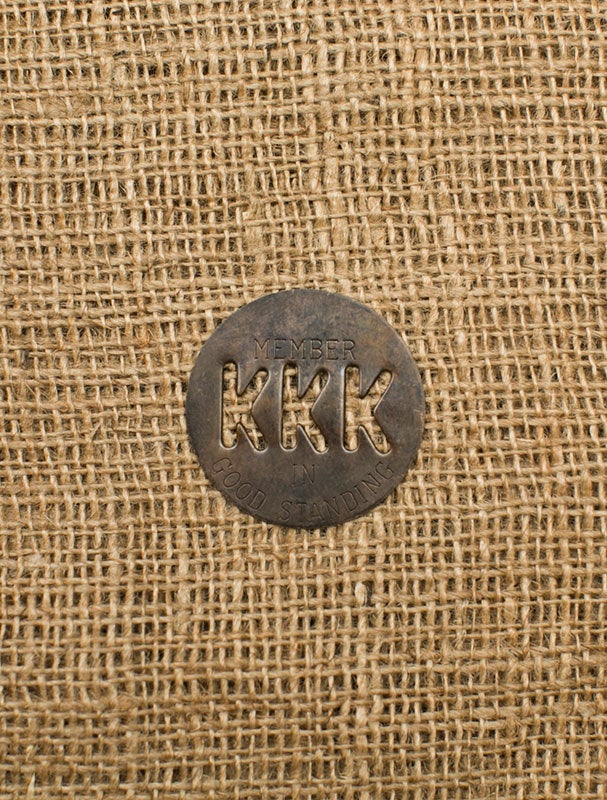Mundy, a former airline employee, searched thrift stores, yard sales and flea markets around the country for 25 years, on a mission to develop an understanding of the African-American experience. Today the John C. Hitt Library houses just a portion of what is now called the Carol Mundy Collection, and these are 14 of her favorite finds.
Spider Webs, a Steamer Trunk and Slavery, 1826-86
Cousins Edith Bennett and Lenora Lindley compiled letters,
maps and other documents charting the exodus of their
ancestors from Liberia, Africa, to Ohio County, Kentucky, into
six handmade volumes that they gave to family members. By
researching the authors, Mundy was able to make contact with
Bennett, who sent her a volume. “It is one of the most wonderful
pieces that I’ve ever found.”
NAACP Advertisement, 1957
This booklet by the National Association for the Advancement of Colored People predates the 1964 Civil Rights Act. “Any publication that talks about current events is a wonderful source of information because it is a firsthand account.”
Cream of Wheat Advertisement, 1921
Mundy found “The Fortune Teller” in Grandview, Missouri. “When I saw this derogatory, stereotypical imagery in early 20th-century advertising, I was fascinated. I wanted to understand my parents’ experience when they looked at items that depicted African-Americans as ignorant.”
Jet Magazine Issues, 1963–69
Founded in 1951 by publisher John H. Johnson,
Jet was originally billed as “The Weekly Negro News Magazine.” Printed for 62 years, the magazine continues as a digital brand. “I grew up with this magazine. It was the news for the African-American community, and people loved it.”
Uncle Remus Brand Cane Sugar Syrup
Advertising Fan, date unknown
This promotional item depicts the popular African-American folktale character created by southern journalist Joel Chandler Harris in 1880. “It’s not necessarily derogatory, just a good example of branding.”
Life of William McKinley and Complete Story of His Assassination, 1901
The real significance of this book is what Mundy found tucked inside of it. “That book contained a yellowing, waxed paper release document for an African-American soldier from the U.S. Army 10th Cavalry [a famous African-American Buffalo Soldiers regiment]. It was my first significant historical piece.”
Ku Klux Klan Medallion, 1975
When Mundy found this metal badge along with a hood, cuff links and a Klansman’s handbook at Shirley’s Trailside Antiques in Winter Garden, Florida, another customer became angry that an African-American woman was buying the items and accosted her with racial slurs. Thankfully, the gun-toting shop owner intervened. “Shirley did an act of bravery that most people would not have done. She saved me that day."
Marionettes, date unknown
Found in a Central Florida antiques mall, these wooden puppets have remained a mystery to Mundy. “When I first saw them, I thought ‘What does it mean that these two are paired together?’ I was so fascinated that I had to have them.”
Mortgage Property Deed for Black Mule Kate, 1911
“African-Americans were prospering in Apopka [Florida] around the turn of the century.” Kate the mule was evidence of this as her deed shows she was mortgaged for $25 by an African-American farmer to help finance his crops. “[Longtime Apopka resident] Michael Gladden gave me a large stack of deeds because he wanted me to see the large amount of property [African-Americans] owned.”
Color: A Tip-Top World Magazine, 1947
This issue of Color features the late Carter G. Woodson, one of the world’s foremost authorities on African-American history. “I bought that magazine at a thrift store in Fort Lauderdale, Florida, because I had never heard of it. It’s the only one I have ever run across in all my collecting.”
Trade Card, 1890
Trade cards were used for advertising since the 17th century. This example is from the Mathushek Piano Manufacturing Company in New York. “It is a kinder, more actual depiction on a trade card than a lot of the derogatory advertising from the same period.”
Identification Badge No. 92086, date unknown
Found in a Florida antiques mall, this metal badge is from a shipyard in Portland, Oregon. “During World War II, the Kaiser Company hired 46,000 African-Americans who migrated to Portland to work in the factories after President Roosevelt signed Executive Order 8802 banning racial discrimination in defense plants. Everybody who worked there had to have one of these badges for security reasons.”
Uncle Tom’s Cabin, 1955
Harriet Beecher Stowe’s landmark novel holds special significance for Mundy, as she grew up near the author’s house in Cincinnati. “I was 9 or 10 when I received this book. Once I read it, I started going to the Stowe house to look at where they used to hide people when they were coming through [on the Underground Railroad].”
“Romeo and Juliet in Dixieland” postcard, 1890
This color postcard depicts a man and woman sharing an intimate moment in a cotton field. “The imagery is not necessarily meant to be derogatory, but African-Americans were [doing more than] just working in cotton fields.”
